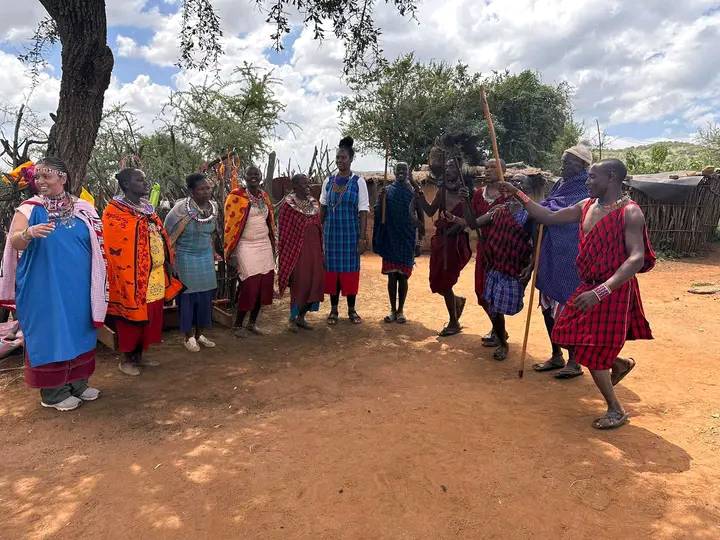
Inside a Maasai Village: Community, Culture, and Continuity
In the rolling savannahs of southern Kenya, the Maasai people continue to live according to traditions that have guided their society for centuries. Far removed from the noise of the modern world, a visit to a Maasai village offers a rare window into a culture where values, identity, and daily life remain intimately connected.
This is not a reenactment. It is not curated for tourists. It is living culture — maintained through community, ceremony, and an unspoken code of continuity. Sublime Travel offers curated, respectful access to this experience for travelers seeking meaning, not performance.
Cultural Integrity
The Maasai community operates through a social structure rooted in age-based systems, leadership by elders, and the preservation of oral traditions. From initiation rites to livestock management, roles are clearly defined and understood.
Daily routines revolve around livestock, which form the core of Maasai life. Cattle are a source of food, wealth, and identity. Every member of the family contributes to their care. Herding is not a task but a responsibility — one that teaches independence, resilience, and land stewardship from a young age.
Cultural identity is also visible in clothing and body art. The red shuka, colorful beadwork, and ear adornments signal status, marital stage, and clan. These are not stylistic choices, but statements of identity passed down through generations.
Architecture and Domestic Space
Maasai homes, or manyattas, are built by women using earth, cow dung, and timber. Small, rounded, and low to the ground, the homes are designed to conserve warmth and protect against wildlife. Inside, space is used efficiently. Cowhide beds, cooking areas, and storage are arranged to reflect function over comfort.
Despite limited material possessions, the sense of order and pride in the home is unmistakable. The space reflects a broader cultural value: intentionality.
A Culture in Transition
While rooted in tradition, the Maasai are not static. Change is present and visible. Many communities now support education for girls and boys. Some members of the younger generation are pursuing careers in conservation, tourism, and entrepreneurship — often returning to support their villages with new skills and perspectives.
Technology, particularly mobile phones, is slowly integrating into daily life. However, the adoption is selective and measured. Cultural values remain dominant, and decisions about change are made collectively.
Visitors may notice solar panels beside traditional huts or schoolchildren reciting lessons in both Maa and English. This juxtaposition is not contradiction — it is adaptation.
What Travelers Should Expect
This experience is immersive, but not intrusive. Visitors are invited to observe, listen, and engage at the pace of the community. Activities may include:
-
Walking with local herders during morning livestock grazing
-
Learning the symbolic meanings behind beadwork patterns
-
Sitting with elders for tea and informal conversation
-
Visiting a local school or health initiative (if appropriate)
-
Participating in traditional meal preparation
No two visits are identical. Each is led by community members and guided by mutual respect.
Responsible Travel Guidelines
Sublime Travel operates under a community-first policy. All visits are arranged with full consent of the host community. Proceeds directly support local schools, water projects, and women’s cooperatives.
-
Group sizes are capped at 6 to avoid disruption.
-
Photography is permitted only with clear permission.
-
Gifts or money should never be handed out directly. Contributions are handled through village-led funds.
-
Cultural rituals are not staged; participation is limited to activities open to guests.
Why It Matters
Cultural experiences, when approached with humility, offer more than education — they offer perspective. In a world increasingly defined by speed, disconnection, and overconsumption, the Maasai way of life stands in quiet contrast.
It is not about going back in time. It is about seeing how a community continues to carry forward a worldview grounded in respect — for land, for elders, for tradition.
Recommended For
-
Culturally conscious travelers
-
Anthropologically curious explorers
-
Families seeking meaningful global education
-
Photographers and writers interested in living heritage
-
Eco-luxury guests wanting grounded, real experiences
Conclusion: Travel That Honors, Not Consumes
A visit to a Maasai village is not a product — it is a privilege. It invites travelers to move beyond observation and into understanding, to exchange presence for perspective. There are no itineraries that can fully script what happens here. What unfolds depends on listening, respect, and the space you allow for cultural authenticity to breathe.
At Sublime Travel, we believe that meaningful travel doesn’t take — it gives back. This experience is designed for those who seek to connect with culture in ways that are honest, unfiltered, and regenerative.
Through respectful access, community leadership, and long-term partnership, we ensure that every visit contributes to the preservation of identity and the empowerment of the hosts who choose to share it.
Travel with intention. Listen before asking. Witness with humility.
This is how culture endures — and how it welcomes you in.